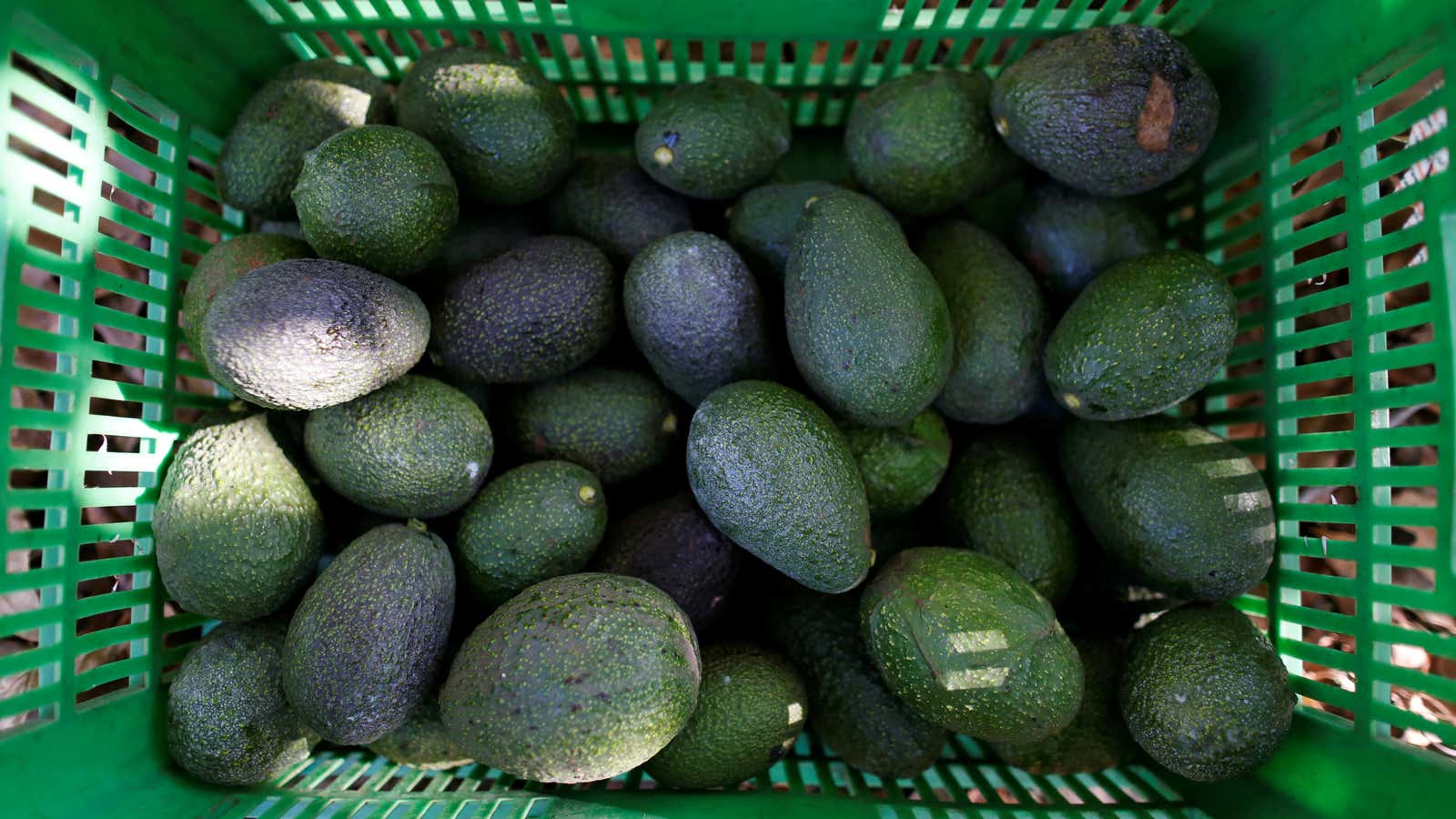It’s the fruit that cannot be stopped. The avocado, first eaten by humans in Central America as early as 12,000 years ago, is finally spreading to every corner of the world.
It is difficult to know why the avocado is catching on globally. It may be the influence of the US culinary culture. It could be a result of marketing efforts (paywall). It might also just be that in the age of globalization, the most delicious foods will inevitably find their way into the mouths of discerning eaters no matter where they are.
The avocado boom is decades-long in the US. But since 2015, growth in avocado imports to the US have slowed. The rest of the world picked up the slack. For example, imports to China, where the avocados are known as “cow-butter fruit,” grew from just 154 metric tons in 2012 to over 31,000 in 2017. Data from the first quarter of 2018 suggests the growth continued. Other countries that have seen similar spikes in recent years include Saudi Arabia, Ireland and South Korea.
Buoyed by the North American Free Trade Agreement (NAFTA) and an end to the US prohibition on Mexican imports the number of avocados imported to the US soared from just 60,000 tons in 2001 to a little less than 870,000 tons in 2015. The volume of avocados grown in the US barely budged during this period, hovering around 200,000 tons per year. A growing Mexican-American population in the US and changes in attitudes towards mono-saturated fats, also likely contributed to the growth.
